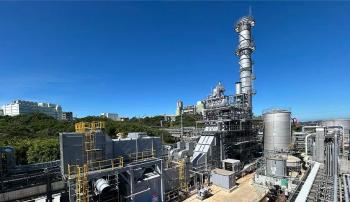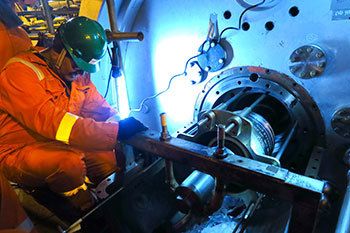
Kawasaki Heavy Industries Unveils Hydrogen Co-Firing Gas Engine
Key Takeaways
- KHI's 30% hydrogen co-firing gas engine offers high efficiency, low NOx emissions, and adjustable hydrogen ratios during operation.
- The engine can be retrofitted to existing systems, supporting decarbonization and energy transition initiatives.
The large-scale hydrogen co-firing engine features hydrogen leak detectors and nitrogen purge systems, with the ability to adjust the co-firing ratio during operation.
Kawasaki Heavy Industries (KHI) announced the world’s first commercial launch of a 30%
Product features include:
- High Efficiency & Low NOx Design: Achieves both high efficiency and environmentally friendly performance.
- Flexible Operation: The hydrogen co-firing ratio can be adjusted at all times, even during operation.
- Safety Measures: Equipped with hydrogen leak detectors, nitrogen purge systems, and additional safety features.
- Retrofit Compatibility: Existing engines can be retrofitted to hydrogen co-firing designs.
Since 2011, KHI’s Kawasaki Green Gas Engine obtained over 240 orders as a high-efficiency gas engine burning natural gas in the 5 – 8 MW power range. Leveraging this technology and experience, the hydrogen-ready model can also burn city gas to satisfy decarbonization and energy transition initiatives. The transitionary product allows practical and sustainable decarbonization as a distributed power source by raising the hydrogen utilization ratio, all the while leveraging existing facilities and infrastructure.
In preparation for the widespread adoption of hydrogen energy, KHI is establishing a hydrogen supply chain which includes production, transportation, storage, and utilization. The company will proceed with actively developing hydrogen or hydrogen-related technologies to satisfy this supply chain and the global carbon-neutral society.
Hydrogen Emissions
In August, the Kansai Electric Power Co., BIPROGY, and Kawasaki announced
It will deploy nuclear-derived low-carbon hydrogen from the Fukui Prefecture and renewably generated green hydrogen from the Yamanashi Prefecture. Testing will calculate and track the CO2 emissions of hydrogen every 30 minutes, verifying whether the power derived from hydrogen co-firing can be attributed to low-carbon hydrogen or green hydrogen. Det Norske Veritas will ensure that the tracking method is compliant with international standards.
Through these demonstration tests, the partners aim to determine electricity origin and the time/location of hydrogen production for consumers. It will also build Japan’s hydrogen supply chain; help achieve carbon neutrality and encourage the joint investigation of commercialization.
KM Comp-H2
In late March 2025, KHI started building a
The new machine achieves high-boosting performance through ultra-high-speed rotating technology, including KHI’s newly developed impeller, which optimizes a small molecular weight gas like hydrogen. Its centrifugal design handles high flow rates and reduces the installation footprint by approximately 86% compared to current hydrogen compressors.
Newsletter
Power your knowledge with the latest in turbine technology, engineering advances, and energy solutions—subscribe to Turbomachinery International today.





